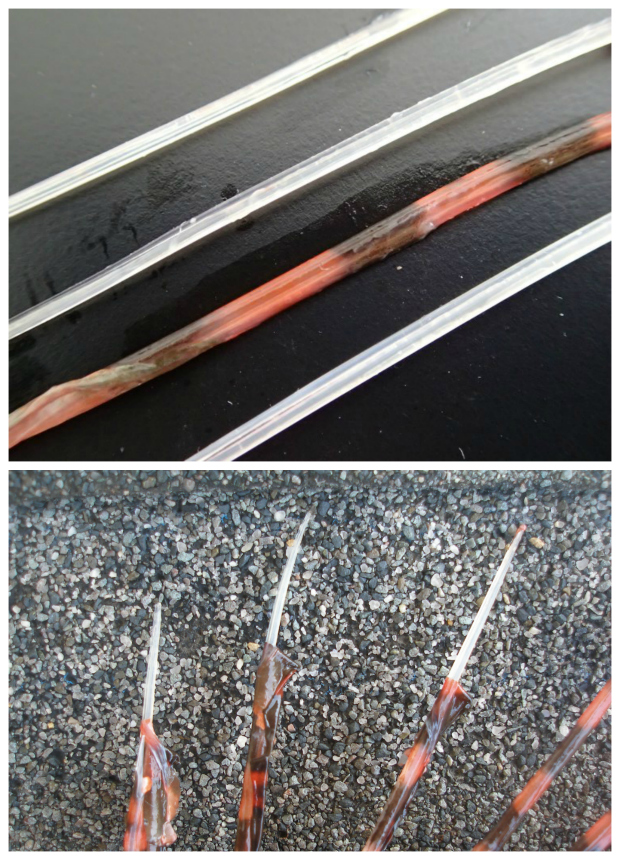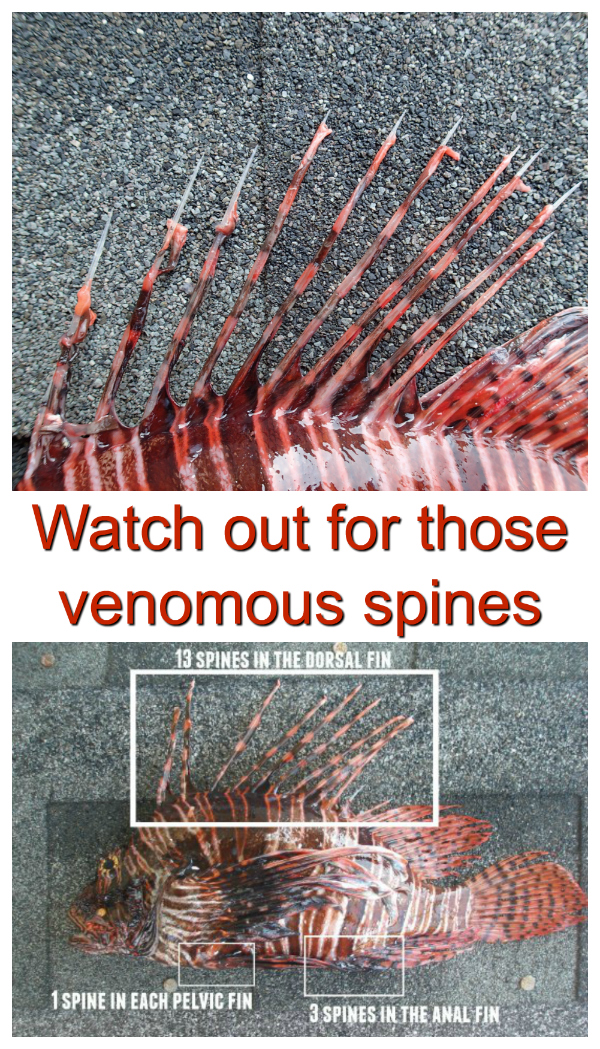Lionfish have an amazing defense system made up of 18 venomous spines. Have a look at my picture below which shows exactly where those 18 venomous lionfish spines are strategically positioned.
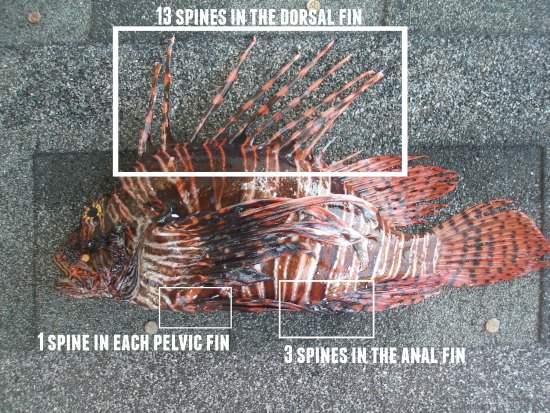
You can see there are 13 spines towards the front and middle of the dorsal fin. There is 1 spine at the front (top) on each of the two pelvic fins, and there are 3 spines at the front of the anal fin. All of these 18 fins point towards the rear of the lionfish which is why you will often see them pointing their butt towards a predator (or you) as this stance provides maximum defense. As the dorsal fin, two pelvic fins and the anal fins contain all of the 18 venomous spines that means that the fan-like fins on each side (pectoral fins) and the tail fin (caudal fin) contain no venomous spines.
The next picture shows a closer view of some of the 13 spines on the dorsal fin and you can also see the orange and black striped sheaf that I pushed back with my pair of tin cutters.
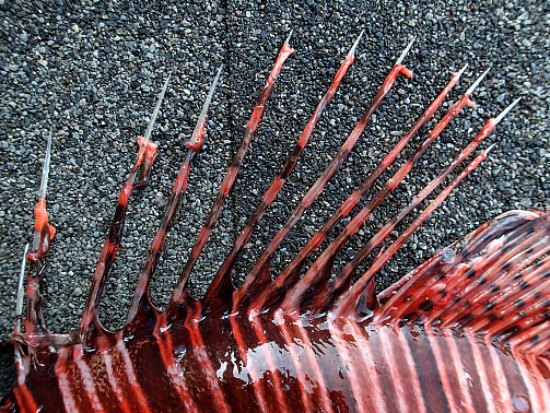
In this final close up picture, you can see the grooves in the spines that have had the sheaf removed, however, you can see the grooves even clearer in the spine that has still got the sheaf fully covering the spine. The lionfish venom itself is contained in glandular tissues that are located in the grooves of the spines. As the spine enters a predator or human victim, the sheaf is pushed back which allows the venom in the grooves to penetrate the wound.
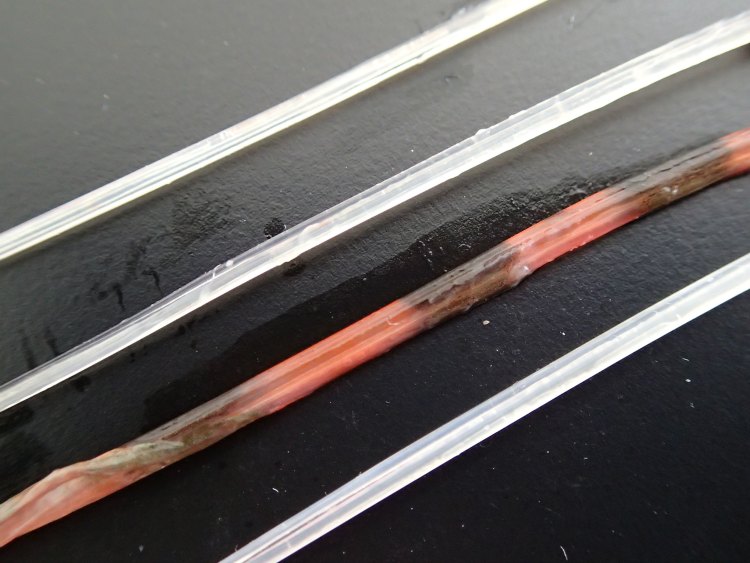
Remember if you hunt lionfish there is always a chance that you may get stung by one or more of those 18 spines. Be prepared and read my post on “Lionfish stings first aid and treatment”.
